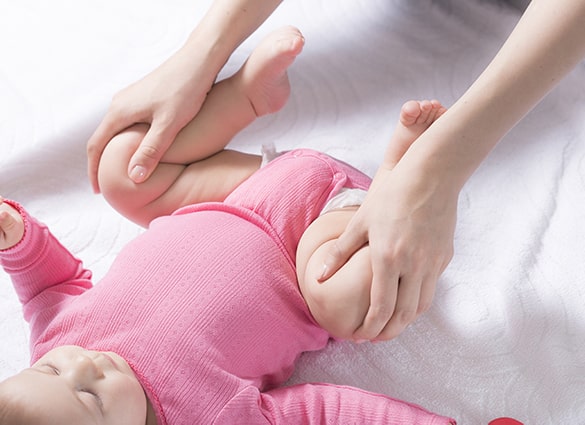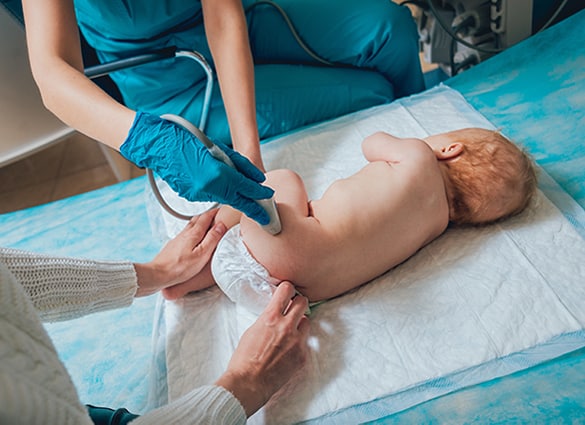
Developmental Dysplasia of the Hip
What is Developmental Dysplasia of the Hip?
Developmental dysplasia of the hip (DDH) means that the hip joint of a baby is dislocated or is prone to dislocation. It affects girls (80%) more than boys and there is commonly a family history in 1/3 of cases. The left hip is affected three times more often than the right, however, it can also affect both hips.
What causes Developmental Dysplasia of the Hip?
Although the exact causes of hip dysplasia are unknown, it is thought that hip dysplasia is developmental. This means that it develops around the time of birth or during infancy. There are a number of risk factors for DDH including:
- Positive family history of hip dysplasia
- Female gender
- First born
- Breech position
- Multiple pregnancy
- Intrauterine packaging problems increase the risk of DDH. Intrauterine packaging problems include:
o Plagiocephaly (flattened skull)
o Torticollis (twisted neck)
o Hyperextended knees
o Foot deformities (eg. calcaneovalgus, club foot, metatarsus adductus)What are the common signs or symptoms of Developmental Dysplasia of the Hip?
Hip examinations are a standard part of the routine newborn baby check by your paediatrician or midwife and at follow up well baby check ups with the GP or child health nurse. The new born screening tests to detect an unstable hip include the Ortolani and Barlow tests. A dislocated hip doesn’t have a full range of motion and tends to make a ‘clicking’ or ‘clunking’ sound as the hip joint is moved.
DDH is sometimes not easily detected on the newborn baby screening check, making it important that these screening hip tests be repeated at every well baby checkup, especially if there are risk factors. The Ortolani and Barlow hip screening tests are only helpful until the baby is about 3 months of age, after which the soft tissues around the hip have tightened and these screening tests are no longer useful. If there is any question about an infant’s hip position or flexibility, a soft tissue ultrasound will be ordered. If the baby is >6 months old, a plain xray will also be required.
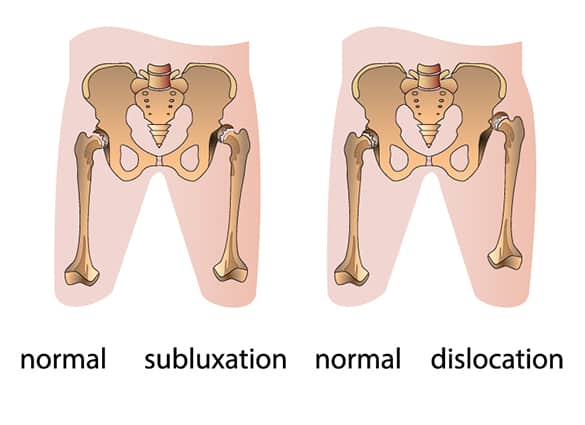
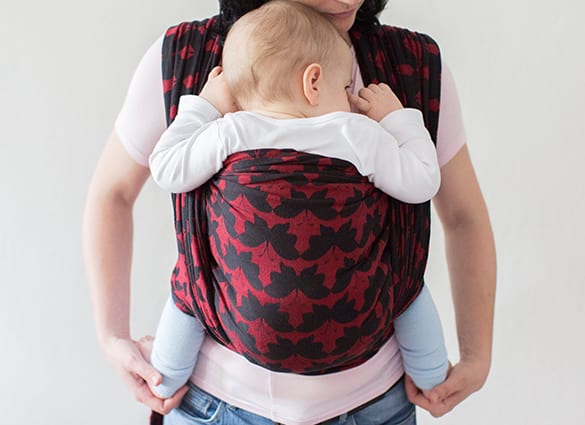
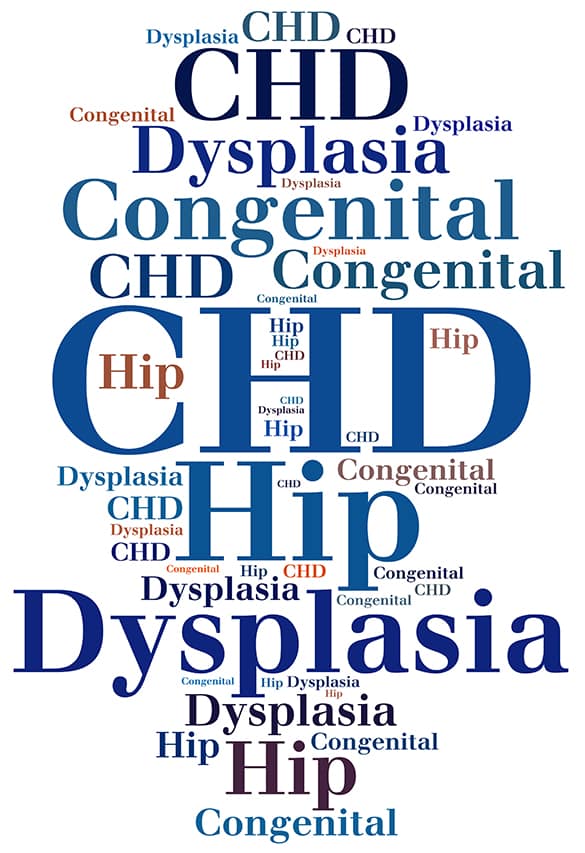
What are the Signs and Symptoms of DDH
Once the child is walking, DDH may become noticeable with these signs and symptoms:
Asymmetry
- Uneven, or asymmetrical, buttock creases may be noticed if one hip is affected
- Thigh skin folds that are asymmetrical and accompanied by uneven buttock creases
- If the baby is walking, there may be an asymmetrical gait pattern.
Hip ‘Clunk’ or ‘Click’
- Sometimes an audible ‘click’ or ‘pop’ occurs when examining a baby’s hips. A hip ‘click’ doesn’t necessarily mean the baby has DDH, as many babies with hip ‘clicks’ have normal hips
- A hip ‘click’ or ‘clunk’ is just one sign that DDH may be present and that further investigation is needed.
Limited Range of Motion
- Parents may notice that nappy changing can be difficult because the hips can’t fully spread apart
Leg Length Discrepancy
- If the child’s DDH has been present for some time, the hips slowly but gradually lose range of motion and the affected leg will appear shorter because the hip has migrated upwards;
• This functional leg length difference will also contribute to an asymmetrical gait pattern, with a tilt or lean to the affected side;
• With the child sitting with buttocks against a wall and knees bent up in front with feet on the ground, the knee height will be uneven (+ve Galeazzi sign)
Pain
- Pain is usually not a feature in babies and toddlers, but pain and a limp is a common presenting symptom during childhood and adolescence.
Swayback, Protruding Abdomen
- After learning to walk, a waddling type gait and an exaggerated swayback with associated protruding abdomen becomes noticeable.
How is Developmental Dysplasia of the Hip treated?
The longer the delay in diagnosis, the more difficult DDH is to treat conservatively and the more likely surgery will be required with poorer longer term outcomes. If DDH is suspected, referral to a paediatric orthopaedic specialist is required.
If DDH is identified early (< 3 months of age) the baby is usually treated with splinting (Pavlik harness). If the baby is >3 months of age, adaptive soft tissue changes will have occurred that may need surgical correction, followed by a spica splint. After the child has learned to walk, there will be adaptive bony changes requiring surgical correction.
Early detection is vital. If DDH is left untreated the hip joint develops abnormally and is more likely to require surgical correction. DDH can predispose a child to premature degenerative joint changes and painful osteoarthritis of the hip in the future.
If your child has a limp, pain, waddling or asymmetric walking pattern or you are concerned about your child’s gait or foot posture, don’t hesitate to see our Podiatrist’s for a paediatric podiatry assessment.
